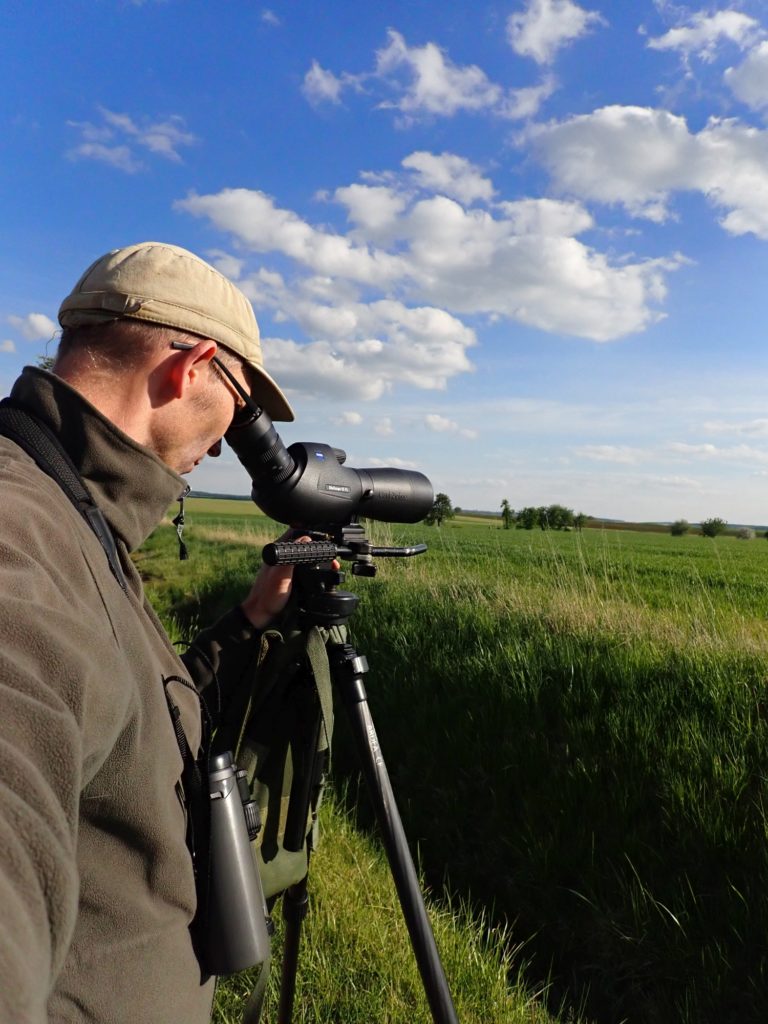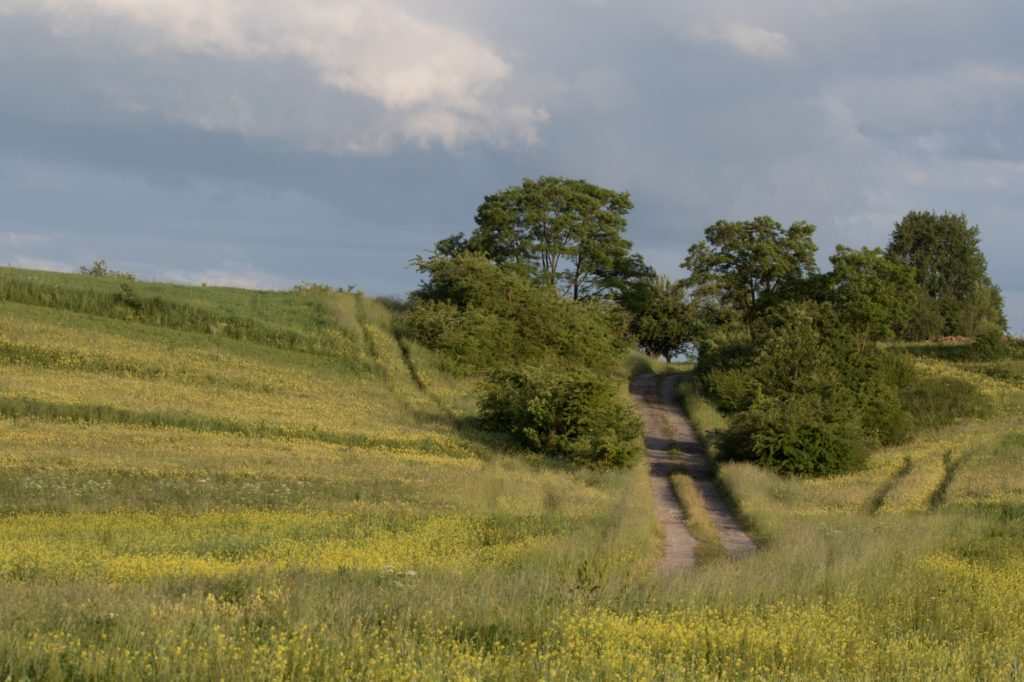In the fourth year of the project, Nils Anthes and his team at the University of Tübingen took a very close look to determine what the corn bunting needs to successfully raise its young. Which measures are truly effective in stabilizing the small remaining population of this characteristic species of the agricultural landscape in Baden-Württemberg?
An essential key to success, says Nils Anthes, lies in the timing of farming activities. Precisely recorded nest locations reveal that many of the corn bunting’s broods are lost during harvest or mowing. If the corn buntings brood in the grain, it is usually not a problem – in this case, the fledglings usually left their nests before the start of the winter crop harvest in July.
In contrast, the situation in pastureland is more critical. Although the nests are often built in sparse meadows rich in herbs, the first mowing traditionally takes place in the second half of June – and thus precisely in the middle of the corn bunting’s nesting phase. At a project site near Rottenburg, the research team discovered that about half of all nests are built in such meadows. A good two thirds of these fall victim to regular mowing.
Partners of the project financed by the Baden-Württemberg Nature Conservation Fund Foundation (Stiftung Naturschutzfonds Baden-Württemberg) at the local agricultural authorities have therefore initiated intensive talks with local farmers. Many close working relationships have developed from this, says Anthes. And as a result, many farmers are willingly participating in the proposed conservation measures for farmland birds. This has led to parties agreeing on a later mowing date – not before the beginning or middle of July – for important breeding areas.
In the meantime, many farmers now contact the experts themselves and verify in advance whether a certain area can be cleared for mowing. Thanks to these partnerships, many more fledglings have been able to leave their nests successfully than in previous years. This effort is also resulting in some initial positive effects on the bird population, as an increase in corn bunting territories has now been observed in this area for the third year in a row – a sign that perseverance pays off!
The remaining problematic cases show that it is still needed, however. The cultivation of clover and alfalfa poses a particularly tricky challenge for the research team and the farmers involved. In some years, these fields are so attractive that a large percentage of the population breeds in them. The fields are regularly harvested about every 8 weeks, however – the interval is too short for a bird brood to be successfully raised.
There is currently only one solution: intensive field observations between mid-May and mid-June in order to detect broods in these areas in a timely manner. Then the nests can be marked and avoided during the harvest. This is not a feasible long-term solution, however, which is why the researchers from Tübingen, who have been supported by Carl ZEISS Sports Optics since 2016, are currently working on a method that will attract the corn bunting to crops that offer safe nesting sites.


